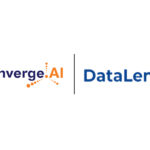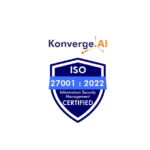
Advanced Retrieval Techniques for RAG Success
The use of Retrieval-Augmented Generation (RAG) within applications is slowly becoming a fundamental and required competency for any organization using generative AI (Gen AI). In RAG, two advanced retrieval techniques have emerged as powerful tools to improve the accuracy and relevance of search results – Sentence Window Retrieval and Auto-Merging Retrieval. These strategies aim to provide more contextual information to language models, leading to more coherent and informative responses.
Sentence Window Retrieval
This is a technique that focuses on enhancing the context around the retrieved sentences. By providing the language model with a window of text around the retrieved sentence, it can better comprehend the context and generate more accurate responses. It works as follows:

Best Use Cases
This retrieval technique is ideal for use cases where queries require very specific information. By breaking down documents into smaller segments, the sentence-window approach effectively balances focused retrieval with contextual richness. It is ideal and useful in use cases involving legal documents, technical manuals, or academic papers where accuracy is critical.
We have helped a leading manufacturing company optimize its research and development efforts. We partnered with them to develop and implement a retrieval system which identifies precise information from research literature, product specification documents, and various case studies. The solution integrates relevant context to provide a detailed and accurate overview to their research team.
Points to Consider
Managing distinct processes for retrieval and synthesis adds complexity to the overall pipeline. There is also a risk of missing the broader context if the reintroduced surrounding information is not adequately comprehensive. You should have the right resources, skills or partners in place to implement this technique.
Auto-Merging Retrieval
This is a more sophisticated technique that aims to combine information from multiple sources or text segments to create a more comprehensive and contextually relevant response. It addresses the limitations of fragmented information retrieval seen in naive RAG approaches.

Best Use Cases
This method is particularly valuable when no single document or segment provides a complete answer, but rather the solution lies in integrating information from multiple sources. It is ideal for use cases where answers require synthesizing information from multiple sources or segments. For example, when aggregating insights from various legal documents or reports to generate an extensive summary.
Most recently, we enabled a US based retailer with extensive customer feedback analysis using auto-merging retrieval approach. We helped them understand overall customer sentiment from different sources like feedback surveys, ecommerce platform, support tickets, and more.
Points to Consider
Establishing hierarchies and setting appropriate merging thresholds is complex and essential for effective results. There is a risk of merging too many or irrelevant chunks, which can cause over-generalization. Also, since merging and more info is involved, it may increase computational demands.
Conclusion
Sentence Window Retrieval and Auto-Merging Retrieval each play a crucial role in optimizing Retrieval-Augmented Generation (RAG) for AI applications. One offers precise, context-rich answers ideal for detailed queries, while the other integrates information from multiple sources for a comprehensive response. Choosing the right approach enhances the accuracy and relevance of AI outputs, empowering organizations with more effective and insightful AI solutions.












